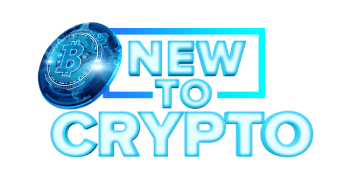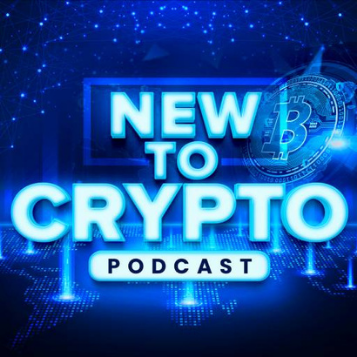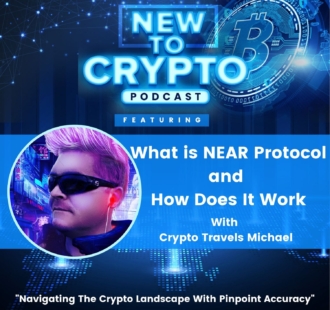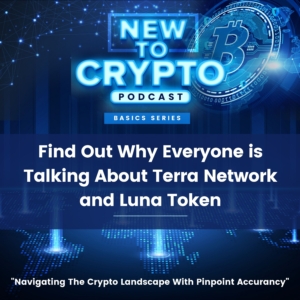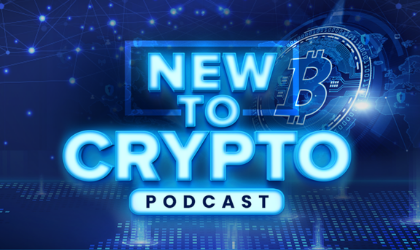Michael 0:01
Welcome to the New to Crypto Podcast designed to guide you through the crypto landscape with pinpoint accuracy created for the new and intermediate crypto investor. Join your host Crypto Travels Michael as he takes you through the different facets of getting started and succeeding in your crypto journey. New to crypto podcast brings you new episodes daily Monday through Friday with surprise bonus episodes sometimes on the weekend. Let me ask you, are you new to crypto and don’t know where to start? Are you more experienced but have questions? Then you’re in the right place. This podcast is designed for you coming at you from the Trading Center and the Lifestyle Dezign Studio. Here’s your host Crypto Travels Michael.
Hey, welcome to today’s episode, I’ll tell you we’re almost in 150 countries now. And I’m happy to say that over 3500 cities around the world. So I truly thank you for chiming in and listening to the show and being part of everything. Today’s episode is all about what is NEAR Protocol. NEAR protocol is a layer one blockchain that was designed as a community run cloud computing platform. And that eliminates some of the limitations that have been bogging down competing blockchains such as low transaction speeds, poor interoperability, etc. This provides the ideal environment for daps and creates a developer and user friendly platform. NEAR uses human readable account names. Unlike the cryptographic wallet addresses common to let’s say a Ethereum. NEAR also introduces unique solutions to scaling problems and has its own consensus mechanism called Doomslug. NEAR Protocol is built by the NEAR collective and its community that is updating the initial code and releases updates to their ecosystem. So who are the founders of NEAR? NEAR Protocol was founded by Eric Trotman, an entrepreneur with experience on Wall Street and founder of Viking education. He also had some other co founders along the way. NEAR Protocol has an extensive team of experienced developers that includes several international collegiate programming contest gold medalists and winners. Let’s just say they have a phenomenal core team. So let’s unpack and talk about for a moment. What makes NEAR Protocol unique. NEAR uses its night shade technology to improve transaction throughput massively. Night shade is a variation of sharding in which individual sets of validators process transactions in parallel across multiple shard chains, improving the overall capacity of the blockchain NEAR Protocol also improves upon the onboarding process of other blockchains by having human readable addresses, and building decentralized applications, with similar registration flow to what users have already experienced. NEAR also has its own token. It’s called the NEAR token, and the ticker symbol is NEAR, and the total supply of nearly 1 billion tokens. NEAR Protocol launched its main net on April 22 2020, with a billion NEAR tokens created at Genesis. So how is the NEAR protocol network secured. NEAR uses a variation of the proof of stake consensus mechanism called Doomslug? Doomslug is based on two rounds of consensus, where a block is considered finalized as soon as it has received the first communication round. This allows for NEAR instant finality by having validators take turns producing blocks rather than competing directly based on their steak. They also have the NEAR foundation and it’s a Swiss based nonprofit dedicated to protocol maintenance, ecosystem funding and guiding the protocol’s governance. The protocol has also built a bridge to Ethereum allowing users to transfer ERC 20 tokens from the Ethereum blockchain to NEAR. So where can the NEAR tokens be purchased? They’re available on Binance, Huobi, FTX and some other exchanges.
I want to say that NEAR operates in a similar manner to other centralized data storage systems like Amazon Web Services, that serve as the base layer on which applications are built. NEAR is operated and maintained by a distributed network of computers. And just as AWS allows developers to deploy code in the cloud, without needing to create its own infrastructure, NEAR protocol facilitates a similar architecture built around a network of computers. And its native cryptocurrency, of course, the NEAR token. As I mentioned about the bridge earlier, from NEAR to Ethereum. NEAR Protocol includes an application called the rainbow bridge that allows participants to easily transfer Ethereum tokens back and forth between Ethereum and NEAR. By the way, in order to move tokens from Ethereum. To new protocol, a user would first deposit tokens in Ethereum smart contract.
These tokens are then unlocked, and new tokens would be created on NEAR’s platform representing the original ones. Since the original funds are held in storage through the smart contract, the process can be reversed when the user wishes to retrieve their original tokens. Let’s unpack Aurora for a moment Aurora is a layer two scaling solution built on NEAR Protocol intended for developers to launch their Ethereum decentralized applications on NEAR’s network. Aurora is built using Ethereum coding technology and the Ethereum virtual machine or EVM, as well as Cross Chain Bridge, which enables developers to link the Ethereum smart contracts and assets seamlessly. Developers can use Aurora to gain the low fee and high throughput advantages of NEAR Protocol. With this familiarity and a network of applications of Ethereum. I hope today’s episode has painted you a better picture as to what is near a lot of people are talking about near protocol right now. Its popularity has risen in the crypto community. And so if you like today’s episode, definitely like and subscribe to the podcast show your support and chime in here tomorrow for another special episode. Until then, make it a great day.
Thanks for tuning in to New to Crypto Podcast. If you liked the episode, be sure to follow and subscribe. You can listen to every episode on all major platforms to have an interest in being on the show or one advertising reach out at newtocrypto.io. Head over to our site newtocrypto.io to access the resources mentioned in each episode. Until next time, remember to navigate the crypto landscape with pinpoint accuracy.
